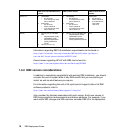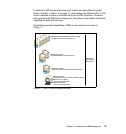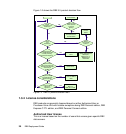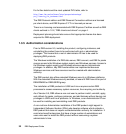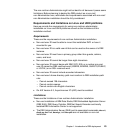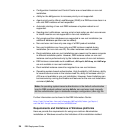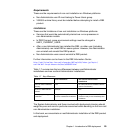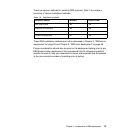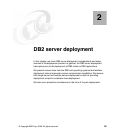22 DB2 Deployment Guide
For further details and the most updated PVU table, refer to:
http://www.ibm.com/software/lotus/passportadvantage/
pvu_licensing_for_customers.html
The DB2 Personal edition and DB2 Personal Connection editions are licensed
per client device, and DB2 Express-C FTL is licensed per server.
There is no licensing cost associated with DB2 Express-C edition as well as DB2
clients outlined in 1.2.2, “DB2 clients and drivers” on page 4.
Deployment planning should also ensure that appropriate license has been
acquired for DB2 deployment.
1.3.5 Authorization considerations
Prior to DB2 version 9.5, installing the product, configuring instances, and
uninstalling the product have to be performed with root or administrator
privileges. This means that a root or administrator ID has to be used for
deploying DB2 products.
The Windows installation of a DB2 data server, DB2 connect, and DB2 fix packs
require access to the Windows system registry and Windows services. Access to
the Windows system registry and Windows services require Administrator
privileges. In addition, key DB2 functionalities are implemented because
Windows services and these services must be created with administrative
authority.
The DB2 product also offers extended Windows security in Windows platforms.
With the extended Windows security enabled, all users of DB2 have to be part of
DB2ADMINS or DB2USERS group.
The installation of DB2 products in UNIX and Linux requires certain DB2
processes to access necessary system resources, thus requiring root authority.
As of Version 9.5, DB2 allows a non-root user to perform install, uninstall, apply,
and rollback fix packs, configure instances, and add features without having root
privileges in UNIX and Linux platforms. In Windows, a non-Administrator ID can
be used for installing and uninstalling most DB2 products.
A non-root/non-Administrator installation of the DB2 product might appeal to
Independent Software Vendors (ISVs) who develop software which embeds a
DB2 product that does not require root/administrator authority for installation. It
could also benefit enterprises that have a large number of workstations and
users who want to install the DB2 product without consuming a system
administrator’s time.





